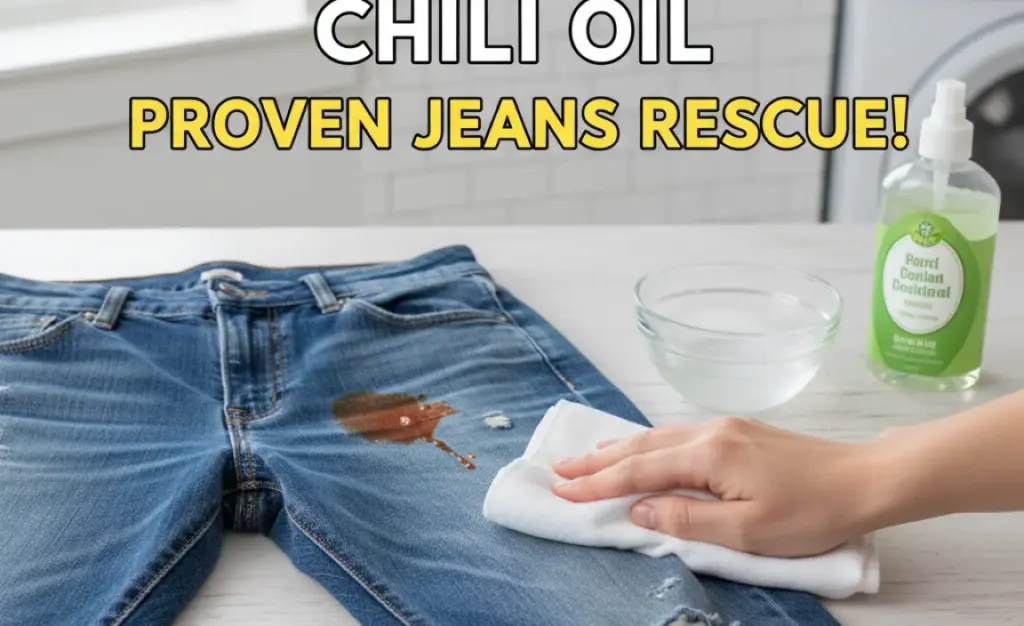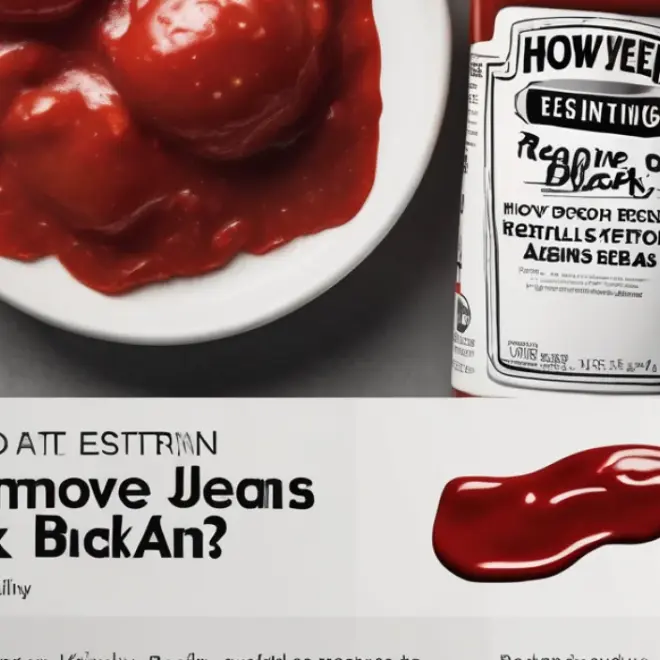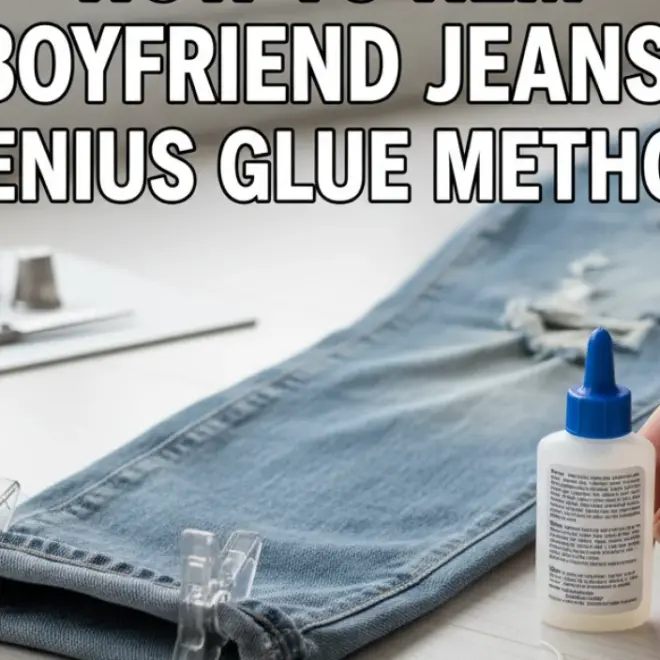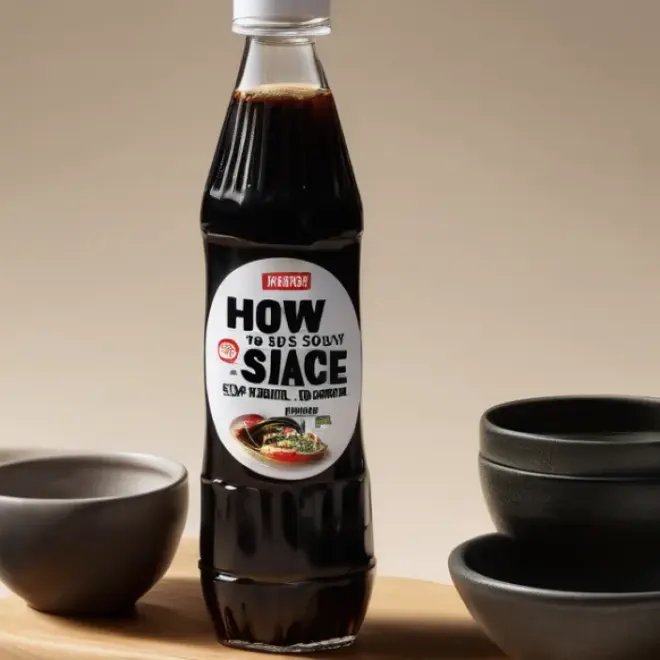Quick Summary: To remove chili oil from jeans, act fast by blotting excess oil, pre-treating with a stain remover or dish soap, and then washing them immediately. For stubborn spots, consider a specialized stain remover or professional cleaning.
How To Remove Chili Oil: Proven Jeans Rescue!
Spilled chili oil on your favorite jeans? It’s a common kitchen mishap for many, especially with the rise of flavorful dishes. That vibrant orange stain can seem daunting, but don’t worry! With a few simple steps and common household items, you can rescue your denim. This guide will walk you through proven methods to tackle chili oil stains effectively, leaving your jeans looking as good as new.
We know the panic that sets in when that slick, oily mark appears. But before you think your jeans are destined for the rag pile, let’s explore how to make that stain disappear. We’ll cover everything from immediate actions to more stubborn spot treatments, ensuring you have the confidence and knowledge to save your denim.
Understanding Chili Oil Stains
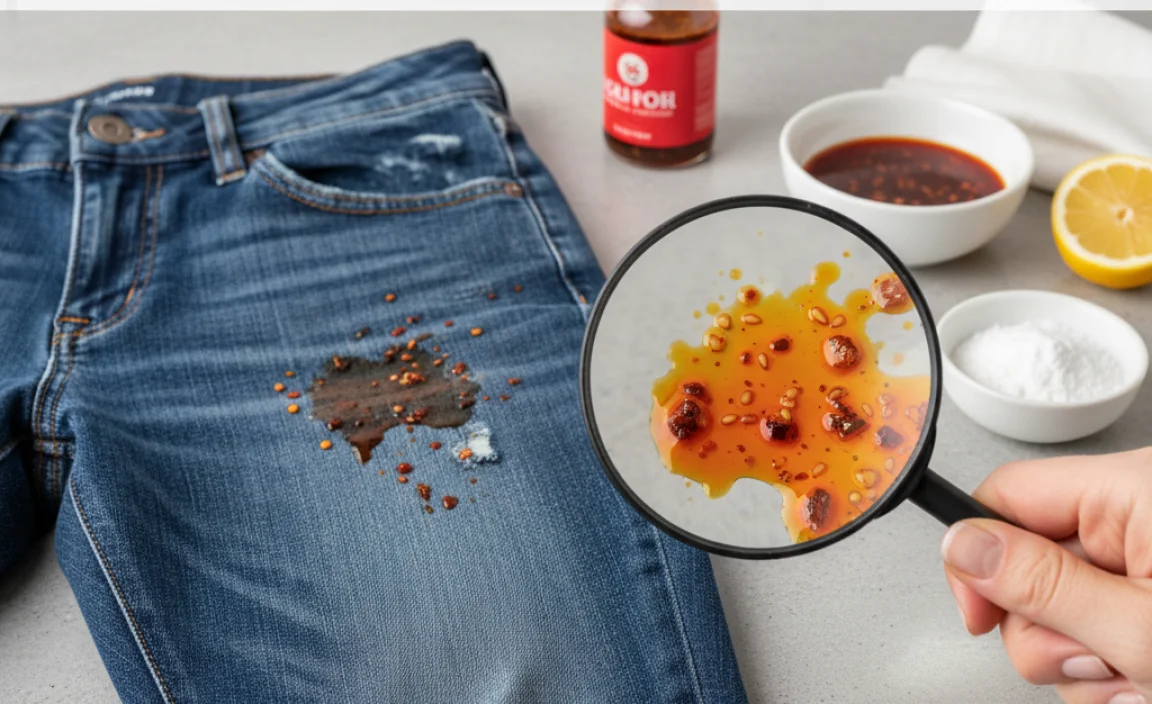
Chili oil is notorious for staining due to its composition. It’s a mixture of oil and the potent pigments (like capsaicin and carotenoids) found in chili peppers. The oil allows these pigments to bind easily to fabric fibers, creating a stubborn mark. Light-wash jeans are particularly susceptible because their lighter color offers less camouflage for the stain. The key to removing chili oil is to break down the oil component and lift the pigment.
The Importance of Acting Quickly

When it comes to chili oil, time is your biggest ally. Fresh stains are significantly easier to remove than set-in ones. The longer the oil and pigment sit on the fabric, the deeper they penetrate the fibers and the more likely they are to become permanent. So, if you notice a spill, your immediate goal should be to mitigate the damage.
Step-by-Step Guide to Removing Chili Oil Stains
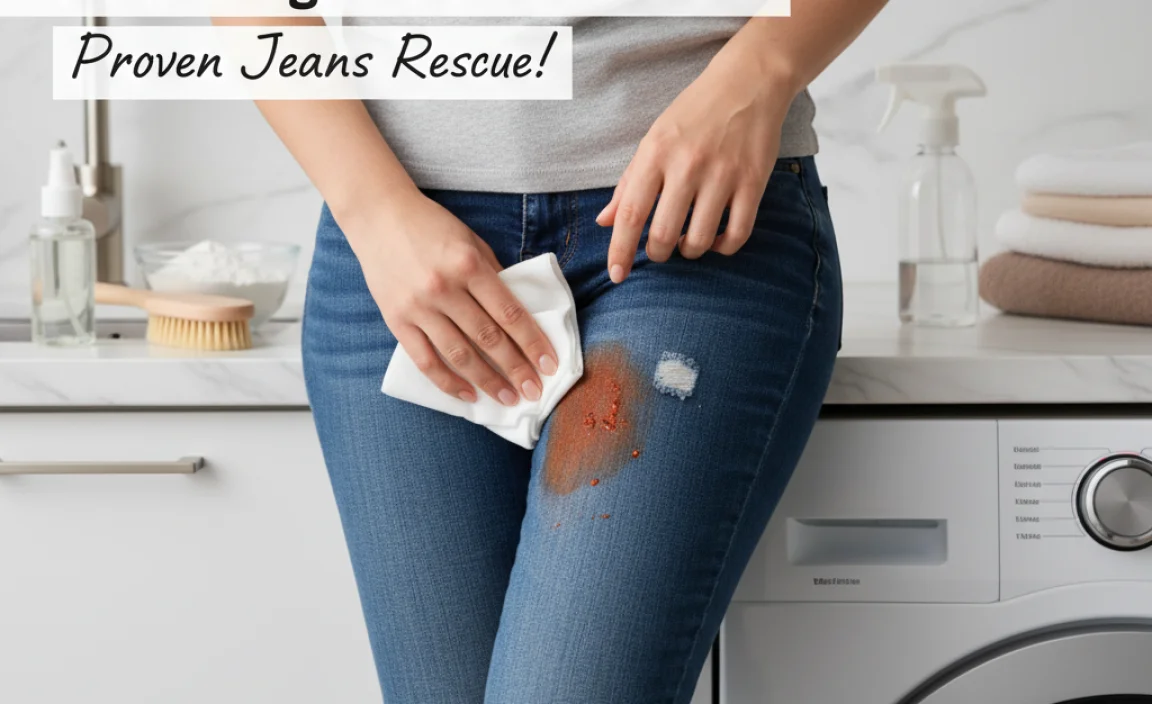
Here’s how to tackle that chili oil stain, starting with immediate actions and progressing to more intensive treatments if needed. Remember, patience is key, and always test any treatment on an inconspicuous area of your jeans first.
Step 1: Blot, Don’t Rub!
As soon as the spill happens, grab a clean, absorbent cloth or paper towel. Gently blot the excess chili oil from the surface of your jeans. The goal here is to absorb as much of the liquid oil as possible without spreading it further into the fabric. Rubbing will push the oil deeper into the denim fibers, making it much harder to remove.
Step 2: Apply a Grease-Cutting Agent
Once you’ve blotted up the excess, it’s time to break down the remaining oil. You have a few excellent options:
Option A: Liquid Dish Soap
A grease-cutting liquid dish soap is one of the most effective household solutions for oily stains. Apply a small amount directly onto the stain. Use your fingers or a soft toothbrush to gently work the soap into the fabric. Let it sit for at least 10-15 minutes to allow it to break down the oil.
Why dish soap works: Dish soaps are specifically formulated to cut through grease and oil, making them perfect for this type of stain. Many brands are mild enough not to damage denim fabric.
Option B: Laundry Pre-TreaTer
A commercial laundry pre-treater designed for grease and oil stains is another excellent choice. Follow the product instructions carefully. Typically, you’ll spray it directly onto the stain, let it sit for the recommended time (often 5-30 minutes), and then proceed to washing.
Option C: Baking Soda or Cornstarch Paste
For a natural approach, you can create a paste. Mix baking soda or cornstarch with just enough water to form a thick paste. Apply this paste generously over the stained area. Let it dry completely (this can take an hour or more). The powder will absorb the oil. Scrape off the dried paste and then proceed to the next step.
Step 3: Rinse the Pre-Treated Area
After the pre-treatment has had time to work, rinse the stained area thoroughly with cool water. This helps to wash away the loosened oil and the cleaning agent.
Step 4: Wash Your Jeans
Now, it’s time to wash your jeans as you normally would, but with a few important considerations:
- Use Cold Water: Always wash stained items in cold water. Hot water can set oil stains, making them permanent.
- Use Your Regular Detergent: Your regular laundry detergent can help further break down any remaining oil.
- Add a Stain Booster (Optional): If you’re concerned, you can add a laundry booster specifically designed for stain removal to your wash cycle.
Important Note: Do not put your jeans in the dryer until you are absolutely sure the stain is gone. The heat from the dryer will set any remaining stain permanently.
Step 5: Inspect Before Drying
Before tossing your jeans into the dryer, carefully inspect the stained area. Hold the jeans up to good light to see if any trace of the stain remains. If the stain is still visible, repeat the pre-treatment and washing steps.
Step 6: Air Dry or Machine Dry
Once you are confident the stain is completely gone, you can air dry your jeans or tumble dry them on a low heat setting. Air drying is always the safest option to prevent accidental setting of any faint, remaining traces.
Dealing with Stubborn or Old Chili Oil Stains
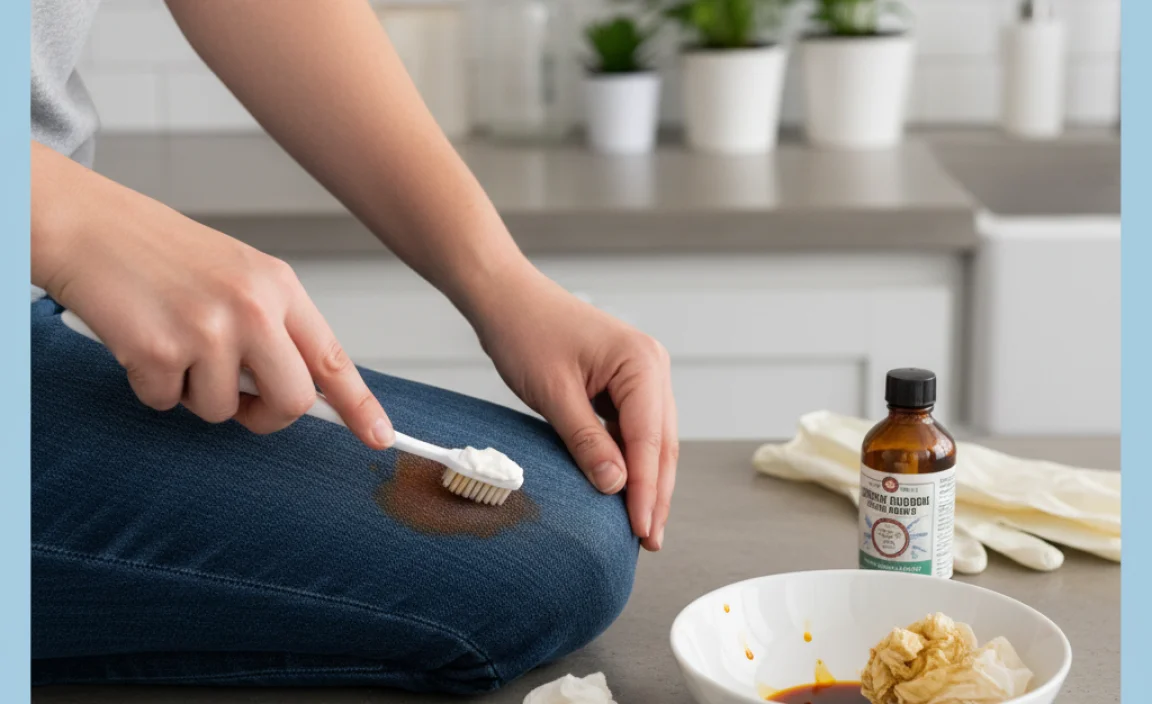
If the stain is old, dried, or particularly stubborn, you might need to escalate your efforts. Here are some advanced tips:
Method 1: WD-40 (Use with Caution!)
This might sound surprising, but WD-40 is a powerful degreaser that can be effective on oil stains. However, it’s crucial to use this method with extreme caution and test it on an inconspicuous area first, as WD-40 can sometimes leave its own mark or affect the dye of certain fabrics.
- Spray a small amount of WD-40 directly onto the chili oil stain.
- Let it sit for about 15-20 minutes.
- Apply liquid dish soap directly over the WD-40 treated area and work it in.
- Rinse thoroughly with cool water.
- Wash your jeans immediately in cold water with your regular detergent.
- Inspect carefully before drying. You may need to repeat this process.
For more information on fabric care and stain removal, the National Agricultural Library offers extensive resources on home economics and fabric care.
Method 2: Enzyme Cleaners
Enzyme cleaners are specifically formulated to break down organic stains, including grease. Look for a laundry stain remover that lists enzymes as an active ingredient. Follow the product instructions, typically involving applying the cleaner, letting it soak, and then washing.
Method 3: Glycerin
Glycerin is a humectant that can help loosen old stains. Warm some glycerin slightly, apply it to the stain, and let it sit for about 30 minutes. Then, work in some dish soap or laundry detergent, rinse, and wash as usual.
Tools and Supplies You Might Need

Having the right tools on hand can make stain removal much simpler. Here’s a quick rundown:
| Item | Purpose | Notes |
|---|---|---|
| Clean Cloths or Paper Towels | Blotting excess oil | Absorbent and disposable |
| Liquid Dish Soap | Grease cutting pre-treatment | Look for a potent, grease-cutting formula |
| Laundry Pre-Treater | Targeted stain removal | Choose one specifically for grease/oil |
| Baking Soda or Cornstarch | Natural oil absorption | Effective for drawing out fresh oil |
| Soft Toothbrush | Gently working in treatments | Avoid harsh scrubbing |
| Cold Water | Washing to prevent setting | Crucial for all stain removal |
| Laundry Detergent | General washing | Your regular detergent is fine |
| WD-40 (Optional) | Heavy-duty degreaser | Use with extreme caution and test first |
| Enzyme Cleaner (Optional) | Breaking down organic stains | Look for formulas with active enzymes |
Special Considerations for Light Wash Jeans
Light wash jeans require a little extra care because stains are more visible, and the dye might be more susceptible to bleaching or discoloration from harsh treatments. Always test any stain remover on an inside seam or hem first to ensure it doesn’t affect the denim’s color.
- Avoid Bleach: Never use chlorine bleach on chili oil stains or on your jeans, as it can yellow the fabric or create uneven lightening.
- Gentle Application: Apply pre-treatments gently and without aggressive rubbing.
- Rinse Thoroughly: Ensure all cleaning agents are thoroughly rinsed out before washing to prevent residue that might cause marks.
- Color-Safe Bleach: In very stubborn cases, a color-safe bleach might be an option, but always follow the product’s instructions precisely and test it first.
When to Seek Professional Help
If you’ve tried multiple methods and the stain persists, or if your jeans are made of a delicate material or are expensive designer denim, it might be time to consult a professional dry cleaner. They have access to specialized solvents and expertise that can often remove even the most challenging stains without damaging the fabric.
When taking your jeans to a cleaner, be sure to:
- Point out the stain and explain what caused it (chili oil).
- Inform them of any treatments you’ve already attempted.
- Ask if they have experience with similar stains on denim.
For advice on stain removal that is backed by scientific principles, resources from university extension offices often provide credible information on fabric care. For instance, many university extension sites offer downloadable guides.
FAQ: Your Top Chili Oil Stain Questions Answered
Q1: Can I use hot water to remove chili oil?
No, avoid hot water. Heat can set oil stains into the fabric, making them much harder to remove. Always use cold water when treating and washing chili oil-affected items.
Q2: How long should I let the dish soap or pre-treater sit on the stain?
For dish soap, letting it sit for at least 10-15 minutes allows it time to break down the oil. For commercial pre-treaters, follow the product’s instructions, which usually range from 5 minutes to a few hours for very stubborn stains.
Q3: My jeans are dry clean only. What should I do?
If your jeans are marked “dry clean only,” it’s best to take them to a professional dry cleaner immediately. Inform them about the chili oil stain and the steps you may have already taken. They have specialized solvents to handle such stains without damaging the fabric.
Q4: Is it safe to use WD-40 on all types of jeans?
WD-40 is a degreaser and should be used with extreme caution. It’s best for sturdy, non-delicate denim. Always test it on an inside seam first to ensure it doesn’t damage the dye or fabric. If in doubt, skip this method.
Q5: What if the stain is on a dark-wash or black pair of jeans?
The process is generally the same, but be extra careful with any treatments that might affect dye. Stick to dish soap or a reputable laundry pre-treater. If using something like WD-40, testing is even more critical, as it could potentially leave a lighter mark on dark denim.
Q6: Can I use an iron to help remove the stain?
No, never use an iron on an oil stain, especially before it’s completely gone. The heat from the iron will permanently set the stain into the fabric fibers.
Q7: My stain is old and completely set. Is there any hope?
Yes, there’s still hope, but it might require persistence. Try the WD-40 or enzyme cleaner methods, and be prepared to repeat treatments. For very old, set-in stains, professional dry cleaning offers the best chance of success.
Conclusion
Chili oil stains on your favorite jeans can be frustrating, but they are rarely a death sentence for your denim. By understanding the nature of the stain and acting promptly, you can effectively tackle it with common household items. Remember the golden rules: blot don’t rub, use a grease-cutting agent like dish soap or a pre-treater, wash in cold water, and always inspect before drying. For those tougher, older stains, persistent application of specialized treatments or seeking professional help can still bring your jeans back from the brink.
With the right approach and a bit of patience, you can confidently rescue your jeans from chili oil spills and keep them looking great for years to come. So, the next time a saucy mishap occurs, don’t despair – you’ve got this!


